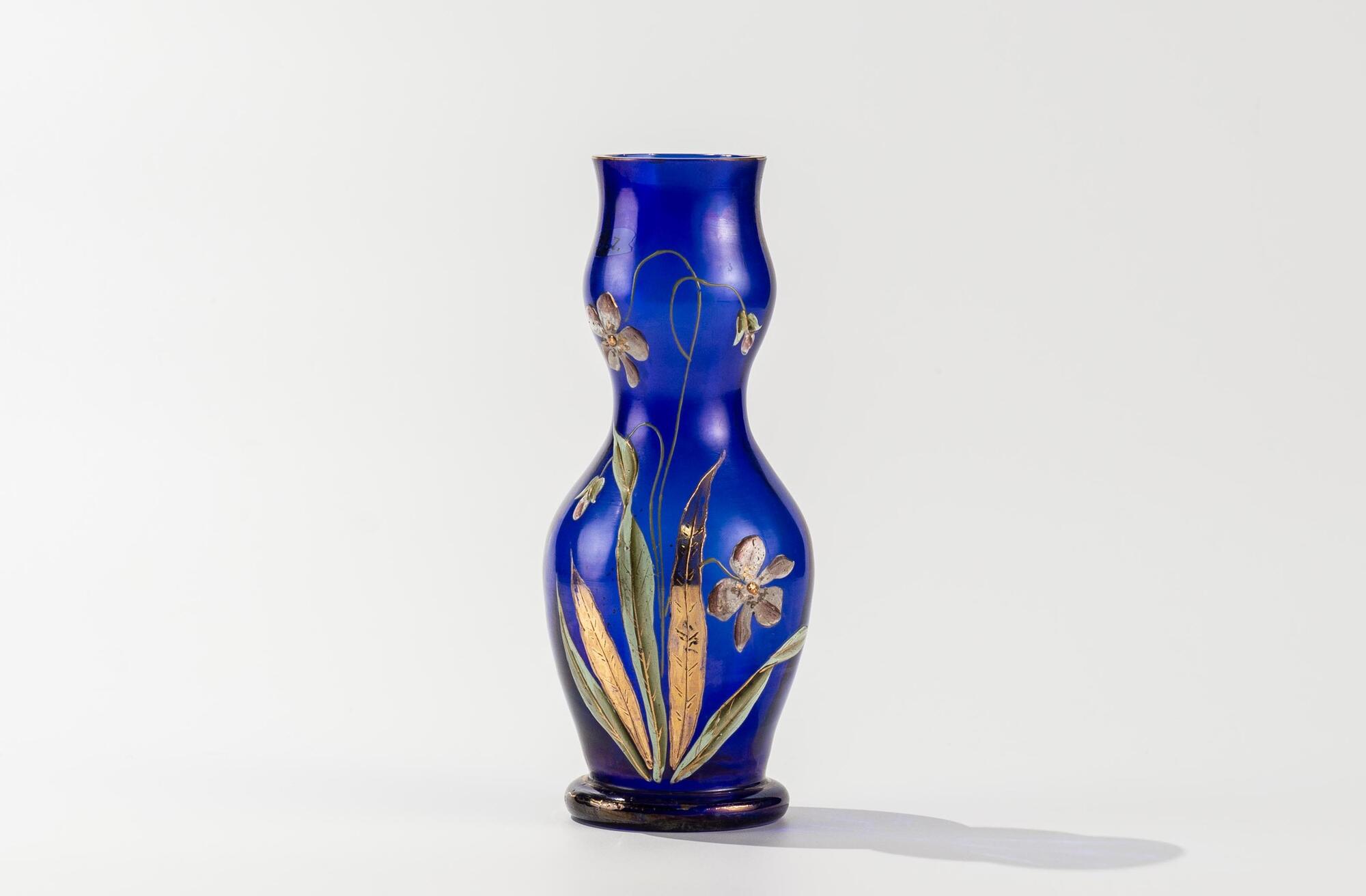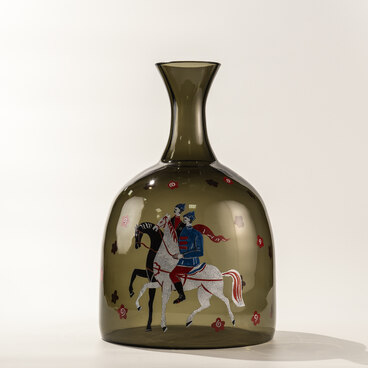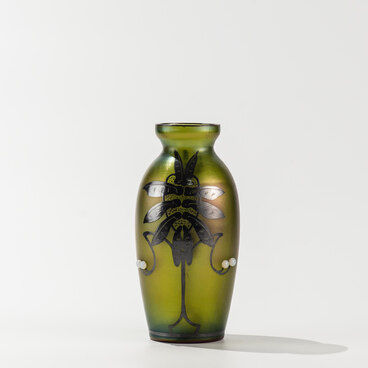A color adds new technical and aesthetic properties to the glass. To get a certain color, various pigments are added to the glass batch during the melting process and distributed evenly in the mixture. The pigments may include iron, cobalt, sulfur, selenium, copper, and nickel oxides — a combination of these elements can be used to achieve various shades. For example, green glass can be created using chromium compounds. Various shades of red are achieved with the help of copper oxides and gold compounds. Cobalt compounds are used to get deep blue colored glass, and manganese compounds produce purple glass.
The flower vase presented at the exhibition was made of blue glass. This color is also known as cobalt blue. Cobalt has been used for tinting glass since Ancient Egypt: it is added into the glass batch and colors the entire volume of the glass.
The method using cobalt compounds is a type of ionic coloring. Cobalt ions are present in glass in the form of cobalt oxide. It is a very intense coloring agent which is why it is often used in creating overlay glass. Cobalt glass on its own is very dark which can be seen in this case. There is a positive correlation between the content of cobalt oxide in glass and its thickness and color density.
This flower vase belongs to the Art Nouveau style. It is an art style of architecture, applied and decorative, and fine arts that was popular in the last decade of the 19th century and the early 20th century. This style was characterized by abandoning straight lines and corners in favor of more natural lines, as well as an interest in new technologies (for example, in architecture), and a heyday of applied art. At the turn of the 20th century, the Dyatkovo Crystal Factory created numerous products in this style, with many of them displayed in the museum’s hall dedicated to 19th-century art.
This vase has a soft curved shape and is decorated using a pattern of stylized fantastic violets. The patterns were applied using enamel and gold. Enamel is low-melting glass that is used to apply thin decorative coatings. Enamel painting is fixed with the help of annealing. Using gold and other precious metals to decorate items is also a widely popular trend. In glass art, liquid polishing gold is the most popular option. After the polishing, such gilding creates a more impressive effect than other gold decoration techniques.
The flower vase presented at the exhibition was made of blue glass. This color is also known as cobalt blue. Cobalt has been used for tinting glass since Ancient Egypt: it is added into the glass batch and colors the entire volume of the glass.
The method using cobalt compounds is a type of ionic coloring. Cobalt ions are present in glass in the form of cobalt oxide. It is a very intense coloring agent which is why it is often used in creating overlay glass. Cobalt glass on its own is very dark which can be seen in this case. There is a positive correlation between the content of cobalt oxide in glass and its thickness and color density.
This flower vase belongs to the Art Nouveau style. It is an art style of architecture, applied and decorative, and fine arts that was popular in the last decade of the 19th century and the early 20th century. This style was characterized by abandoning straight lines and corners in favor of more natural lines, as well as an interest in new technologies (for example, in architecture), and a heyday of applied art. At the turn of the 20th century, the Dyatkovo Crystal Factory created numerous products in this style, with many of them displayed in the museum’s hall dedicated to 19th-century art.
This vase has a soft curved shape and is decorated using a pattern of stylized fantastic violets. The patterns were applied using enamel and gold. Enamel is low-melting glass that is used to apply thin decorative coatings. Enamel painting is fixed with the help of annealing. Using gold and other precious metals to decorate items is also a widely popular trend. In glass art, liquid polishing gold is the most popular option. After the polishing, such gilding creates a more impressive effect than other gold decoration techniques.



